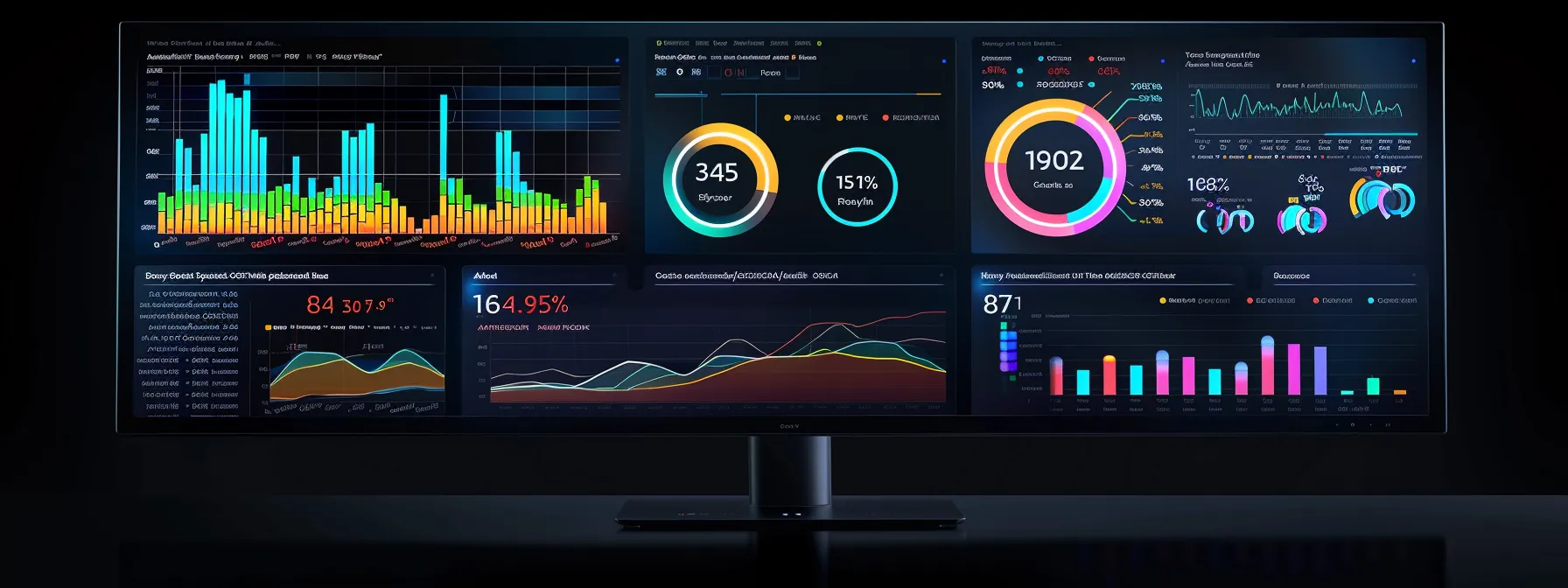Key Benefits of Identity and Access Management Solutions
Are you facing challenges balancing secure access with compliance to general data protection regulation? This discussion reviews identity management fundamentals, key components of identity and access management solutions, and technologies such as ibm security access manager that simplify management for businesses. Business owners will find clear answers to common issues while learning how to secure data and streamline IT operations. With 40 years of experience in leasing and repairing office equipment, 1800 Office Solutions offers trusted strategies to address modern business security needs.
Key Takeaways
- Identity and access management enforces strict permissions to protect sensitive systems and information
- Robust authentication and authorization protocols ensure verified users access critical resources safely`
- Clear user roles and monitoring measures sustain operational integrity while reducing exposure to unauthorized access
- Structured audits and integrated tools help maintain a secure system environment and compliant operations
- Modern identity management employs advanced protocols to assist in meeting evolving regulatory requirements
Why Is Identity and Access Management Essential?

Identity and Access Management secures digital interactions and enforces strict access controls. It protects sensitive data against ransomware attacks and upholds system integrity while safeguarding an aws account for every organization.
A robust identity management system limits resource access strictly to authorized personnel while streamlining the user experience. This control provides direct benefits including:
- Mitigation of ransomware risks
- Preservation of data integrity
- Secure management of aws account credentials
- Improvement of user experience in system access
- Stronger controls for the organization
The approach simplifies permission management and reduces administrative overhead with clear access policies. It enables organizations to monitor system activity, secure an aws account, and reduce exposure to ransomware threats.
A comprehensive identity management solution centralizes access control and supports operational efficiency. It treats system integrity and ransomware protection as key priorities and maintains a consistent user experience across the organization.
Key Components of Identity and Access Management Solutions

This section covers identifying users and their roles to build a secure architecture, managing user access levels for improved scalability within digital transformation efforts, and protecting sensitive information using intelligence and firewall measures. These topics work together to streamline operations and strengthen overall system controls.
Identifying Users and Their Roles
Identifying users and their roles forms the backbone of a secure identity and access management framework. Many organizations utilize a software as a service model that assigns specific rights based on clearly defined responsibilities, while a well-maintained database stores user information for verification purposes.
System administrators often rely on a directory service that incorporates lightweight directory access protocol to ensure reliable user validation. This approach simplifies administrative tasks by directly linking defined rights to each role, thereby maintaining seamless access control and operational efficiency.
Managing User Access Levels
Managing user access levels limits digital interactions to verified personnel and secures essential resource control. The use of the least privilege principle supports computer security and helps organizations meet regulation requirements in cloud computing environments.
Administrators configure distinct access tiers that reflect defined job responsibilities to simplify oversight in diverse systems. This targeted method addresses common computer security challenges and reinforces compliance with regulation protocols while protecting critical resources.
Securing Sensitive Information
Securing sensitive information requires clear methods to protect user data and control access across the digital environment. This approach employs json data protocols and okta ciam techniques that lower complexity and foster a robust security ecosystem.
An effective strategy involves continuous monitoring of user activities paired with structured validation processes. By integrating okta ciam standards and managing json configurations, organizations can reduce complexity while maintaining integrity within their ecosystem.
Technologies Used in Identity and Access Management

Authentication mechanisms verify user credentials, while authorization protocols regulate access rights. Identity federation solutions link disparate systems and serve as a critical tool for effective risk management. This integration supports secure web browser sessions and defends against malware, reinforcing a robust cyber security framework.
Authentication Mechanisms
Authentication mechanisms provide a secure method for verifying user identities while supporting smooth communication between different systems. These processes rely on protocols based on an open standard, which helps maintain consistent productivity when integrated with solutions from ibm and configurations in amazon elastic compute cloud.
These methods restrict system access and lower the risks associated with unauthorized interactions, ensuring a stable operational environment. Professionals update authentication strategies regularly to secure communication channels and sustain productivity, aligning their practices with standards used by ibm and amazon elastic compute cloud.
Authorization Protocols
Authorization protocols play a key role in managing digital interactions within secure frameworks. They integrate robust systems such as google cloud and utilize transport layer security measures to verify user credentials and monitor ip address activity. By employing public key infrastructure, these protocols support strict access controls that simplify privileged account management.
Industry experts note that effective authorization protocols reduce risk by ensuring only verified users access critical information. They apply transport layer security alongside public key infrastructure to validate connection attempts and confirm legitimate ip address usage. This method strengthens digital systems through clear standards that address challenges in managing privileged account management.
Identity Federation Solutions
Identity federation solutions streamline digital access by integrating trusted identity providers into a unified framework. They employ efficient provisioning processes that support passwordless authentication, ensuring secure and seamless interactions for every business.
A standard markup language often facilitates the exchange of identity information, maintaining consistency across systems and simplifying integration. This approach aligns provisioning efforts with identity providers’ capabilities, providing a clear and secure method for implementing passwordless authentication in a business environment.
Implementing Identity and Access Management Best Practices

This section explains steps for effective identity and access management deployment, integrating existing IT systems such as amazon web services with sms alerts, establishing a consistent audit trail, and implementing okta pam solutions. Each customer benefits from structured audits and tailored integration approaches that set the stage for detailed best practices in the following topics.
Steps for Effective IAM Deployment
Effective IAM deployment requires a systematic approach that implements secure login protocols, integrates robust cryptography measures to safeguard sensitive office system data, minimizes the attack surface, identifies potential attack vector risks, and provides dedicated help desk support for prompt incident resolution:
Subsequent efforts focus on refining access parameters by reviewing login records and monitoring system activity to pinpoint irregular attack vector patterns; robust cryptography fortifies data integrity while a dedicated help desk ensures immediate responses to emerging risks, thereby tightening overall system security.
Integrating IAM With Existing IT Infrastructure
Integrating IAM with existing IT infrastructure reinforces confidentiality by establishing a secure iam identity for every user. Organizations benefit from practices endorsed by gartner iam when they connect tools like microsoft entra id to their system, ensuring accurate access control for all operations.
This strategy supports a well-organized system that merges modern software with established components for improved reliability. Businesses experience streamlined identity management that addresses security challenges while upholding data confidentiality across every part of the system.
Conducting IAM Audits and Assessments
Conducting thorough IAM audits involves detailed reviews of system logs and user access records, including verifying each email address associated with the platform. This process strengthens federated identity management practices, meets regulatory compliance requirements, and protects every consumer’s data by ensuring that access permissions are accurately controlled.
Expert teams perform regular assessments to pinpoint vulnerabilities and confirm that configurations match current security standards. Insights gathered from the gartner iam conference guide these evaluations, providing actionable strategies that address real-world challenges and support continuous improvements in system integrity.
Common Challenges in Identity and Access Management

It reviews challenges such as managing multiple identity sources, meeting strict regulations, and balancing security with user convenience. The discussion connects iam systems’ control within the operating system, emphasizes federated identity solutions, and incorporates knowledge gathered from the world wide web. Subsequent sections provide practical strategies for each challenge.
Managing Multiple Identity Sources
Managing multiple identity sources poses challenges when aligning diverse verification methods across various systems. The process often affects the usability of software solutions, as inconsistent data from different machines and computer systems can complicate integration with a web service framework.
Organizations facing these issues can benefit by adopting unified software that consolidates identity data from multiple sources. This approach improves overall usability and streamlines operations by ensuring that machine-generated credentials work smoothly with computer systems in a secure web service environment.
Ensuring Compliance With Regulatory Standards
Regulatory compliance demands that organizations structure access controls and audit practices in line with legal requirements on digital platforms. Implementing procedures such as employee offboarding and utilizing one identity manager streamlines the verification of access rights on the server. Strict protocols allow organizations to capture each fingerprint of user activity to guarantee a secure experience:
- Robust server logging for accurate data records
- Effective employee offboarding for controlled access removal
- Integration of one identity manager to administer user privileges
- Biometric fingerprint verification for added security
- An overall improved experience through consistent policy enforcement
Experts advise regular reviews to adjust these measures as new regulatory requirements and threats emerge. Continuous monitoring of server activities paired with detailed reporting further strengthens organizational security and supports a reliable compliance framework.
Balancing Security and User Experience
A web application that utilizes secure password protocols and automation assists in balancing strict access measures with a smooth user experience. The application employs security assertion markup language to verify user credentials and prevent a data breach.
Industry experts recommend routine updates and automation in managing access to meet both security and usability needs. Integrating security assertion markup language with consistent password updates provides a resilient framework against potential data breach risks.
The Role of Identity and Access Management in Security

An efficient iam solution guards against data breaches, boosts fraud detection using ping identity, and supports incident response plans. Using a trusted identity verification service ensures information privacy within a complex landscape. The upcoming segments offer practical insights on each aspect, empowering organizations to strengthen security measures effectively.
Protecting Against Data Breaches
Organizations adopt identity management solutions that employ a clear policy to limit access to sensitive data, ensuring that only authorized users gain entry. A trusted identity provider continuously monitors user activity, reducing exposure to cybercrime and reinforcing overall identity security.
Companies regularly review and update their identity management solutions to address emerging vulnerabilities effectively. By combining strict policy enforcement with insights from a reliable identity provider, businesses can minimize the risk of data breaches and maintain robust identity security.
Enhancing Fraud Detection Capabilities
Modern management solutions integrate the use of a security token and a dependable authenticator to verify user identities and detect unusual activities swiftly. Applying the principle of least privilege minimizes unnecessary access, which helps protect sensitive data that supports various marketing efforts in today’s dynamic business environment.
Expert teams monitor system logs in real time to identify suspicious patterns and act promptly against potential fraud. This proactive approach reinforces system security through verified authentication methods and controlled access, thereby ensuring that critical operations and marketing processes remain protected.
Supporting Incident Response Plans
Identity and access management systems support incident response plans by delivering a clear definition of user roles and automating a secure workflow for real-time alerts. This technology uncovers the truth behind user activities and system interactions, ensuring that response teams receive precise information during security events.
An effective incident response plan integrates identity and access management to guide technical teams through a structured workflow that tracks every action. Utilizing advanced technology to verify credentials and monitor activity provides the truth required to swiftly address breaches, thereby reinforcing the overall security framework.
Future Trends in Identity and Access Management

AI and machine learning are reshaping identity access management by enhancing system accessibility and enforcing stricter privacy regulations that protect every company. The rise of decentralized identity systems, along with innovations in okta identity governance and api integration, offers practical insights into today’s security challenges. This section outlines these trends for a robust future in identity access management.
The Impact of AI and Machine Learning
Artificial intelligence and machine learning are reshaping identity and access management with practical applications such as openid integrations, improved system visibility, and robust remote work security measures, as recommended by the national institute of standards and technology. These advancements help organizations mitigate fraud risks and streamline user verification:
- Real-time openid authentication protocols
- Improved monitoring for system visibility
- Strengthened security for remote work environments
- Guidance based on national institute of standards and technology criteria
Industry experts observe that the incorporation of these advanced technologies into identity systems simplifies access control and reduces administrative burdens, creating effective solutions for modern business challenges. This method offers clear benefits while addressing issues related to fraud and evolving remote work demands.
Increased Focus on Privacy Regulations
Regulatory bodies are tightening privacy requirements, prompting organizations to revise identity protocols and access controls in a practical manner. Industry professionals observe that businesses utilizing microsoft azure and aws platforms continuously update their systems to align with the payment card industry data security standard, supporting comprehensive learning in security practices.
The incorporation of biometrics into modern identity frameworks strengthens user verification and sustains compliance with evolving privacy mandates. By integrating advanced technology and dedicated learning initiatives, companies achieve improved system security while addressing key regulatory demands.
The Rise of Decentralized Identity Systems
Decentralized identity systems are emerging as a practical solution for businesses aiming to fortify digital security and refine credential management. By integrating onelogin with aws identity frameworks and using research-validated oauth protocols, organizations see improved iam security:
- Simplified user verification with onelogin integration
- Effective control using aws identity systems
- Updated oauth procedures based on ongoing research
- Stronger iam security through modern protocols
Industry experts observe that decentralized identity solutions address access management challenges and offer tangible benefits for companies. They advise reviewing current systems to adopt frameworks that ensure clear onelogin integration, maintain solid aws identity oversight, and support reliable iam security.
Learning Resources for Identity and Access Management

This section provides a concise overview of recommended books and articles, online courses and certifications, and industry conferences and webinars on identity and access management. It covers machine learning applications, iam tools, workforce training, xml integration, and privilege control, offering practical insights for advancing expertise in the field.
Recommended Books and Articles
Industry experts note that selected books and articles provide a clear roadmap for mastering identity management concepts. These resources explain fido alliance standards, offer guidance on performing thorough audits, and detail how to configure a proxy server to support a stable infrastructure and intuitive interface.
Published materials offer actionable insights that reflect real-world experiences while addressing business challenges in identity control. They outline effective methods using fido alliance approaches, highlight key steps in conducting system audits, and describe setting up proxy servers to secure the underlying infrastructure and user interface for reliable performance.
Online Courses and Certifications
Online courses and certifications provide a dependable resource for professionals seeking to improve their understanding of identity and access management. These programs cover topics like phishing prevention, data security techniques, separation of duties in administrative processes, efficient computer network management, and html coding practices for secure documentation:
- Phishing prevention strategies
- Data security best practices
- Implementation of separation of duties
- Fundamentals of computer network management
- HTML documentation standards
Certifications and online courses offer interactive modules and practical case studies that demonstrate industry-aligned protocols in live settings. They equip learners with actionable skills for developing robust security measures and maintaining clear system oversight, which proves beneficial for addressing common challenges in identity and access management.
Industry Conferences and Webinars
Industry conferences and webinars serve as a key platform where experts discuss cloud-based security innovations and smart card integration while addressing advances in artificial intelligence that improve identity solutions. They provide insights into effective credential handling and strengthen privileged access management practices, offering actionable strategies for organizations seeking robust security measures.
These events feature real-world case studies and interactive discussions that help professionals understand evolving trends and implement clear security protocols. Attendees benefit from expert guidance and practical reports that aid in aligning identity management frameworks with current industry standards, ensuring improved defenses and system stability.
Frequently Asked Questions
What is identity and access management in business settings?
Identity and access management is a method that verifies user credentials and allocates permissions within business systems. It controls entry to sensitive networks and resources, ensuring that only authorized individuals interact with vital digital and physical assets.
An established supplier with decades of service uses such practices to support reliable operational systems. Providers integrate secure access protocols into managed IT services, reinforcing both leasing and repair operations with consistent, controlled measures.
What key components form an effective identity and access management system?
An identity and access management system utilizes secure user authentication, role-based controls, and centralized directories. It integrates tools such as single sign-on and multi-factor verification to restrict access and verify identities with precision.
Robust systems support regular audits, efficient user provisioning, and self-service password management. They maintain cybersecurity standards and meet managed IT service requirements, assisting business owners in securing sensitive data while managing office equipment and IT assets effectively.
What technologies support identity and access management deployment?
Identity and access management employs multifactor authentication, single sign-on, and role-based controls. Protocols like SAML and OAuth secure credential exchanges, while directory services and federated identity systems manage user profiles and restrict access effectively to networked resources and office systems.
Business systems integrate cloud identity platforms, automated provisioning, and certificate-based authentication to shield critical data. Drawing on decades of office equipment expertise, these solutions fulfill managed IT services requirements while protecting sensitive information and supporting operational efficiency for organizations.
How can organizations overcome identity and access management challenges?
Organizations can address identity and access management challenges by adopting streamlined access control systems. Implementing robust authentication measures and periodic system reviews minimizes security risks, as managed IT services help maintain strict user permissions and monitor potential issues in real time.
Experienced providers such as 1800 Office Solutions apply decades of expertise to support security initiatives. Their professional approach integrates reliable managed IT services with practical office solutions, ensuring that confidential data remains protected while meeting organizational performance requirements.
What learning resources improve understanding of identity and access management?
Technical guides, online courses, and expert webinars assist professionals in grasping identity and access management concepts. These resources cover topics such as authentication, authorization, and security policies, which support growth in managed IT services and cybersecurity within business systems.
Peer discussions, documented case studies, and industry-specific forums foster deeper comprehension of security management practices. Business owners can use these channels to adopt proven strategies that boost overall office efficiency in managed IT environments while maintaining robust cybersecurity operations.
Conclusion
Understanding identity and access management equips organizations with the framework to secure systems and control critical access points. This overview clearly defines user roles and the application of stringent authentication and authorization processes. The strategy minimizes exposure to cybersecurity threats, simplifies permission management, and sustains data integrity. Business leaders gain actionable insights that support robust security measures while streamlining daily operations.











